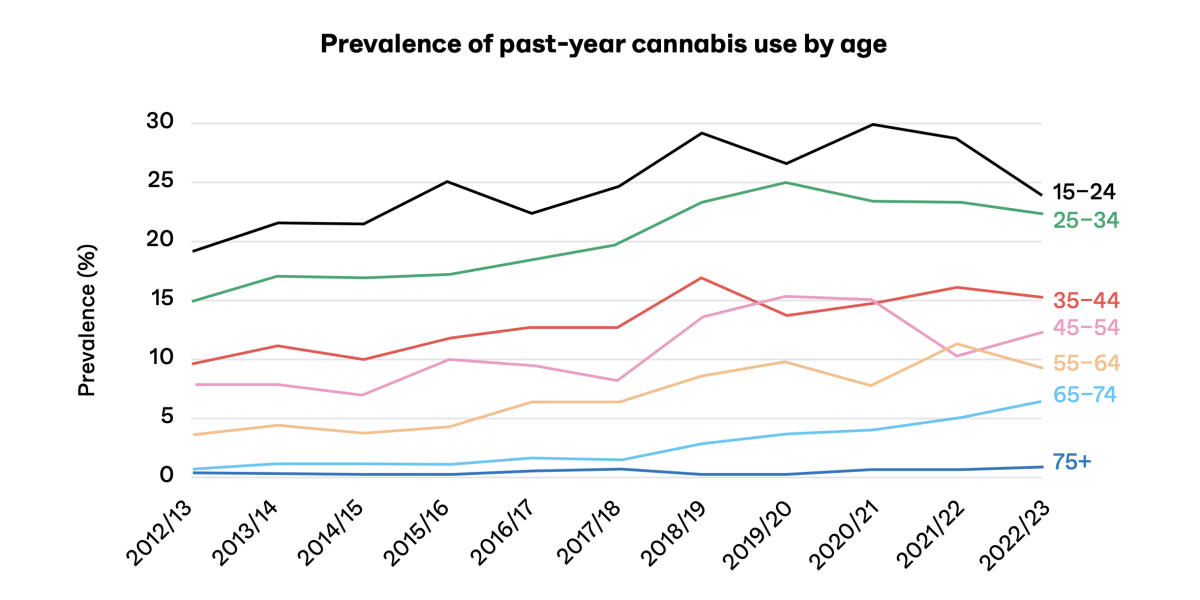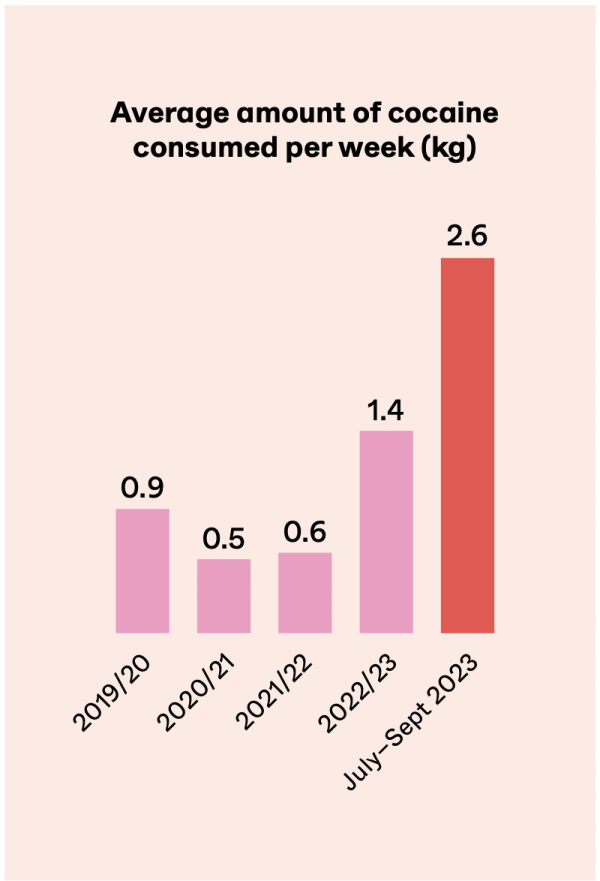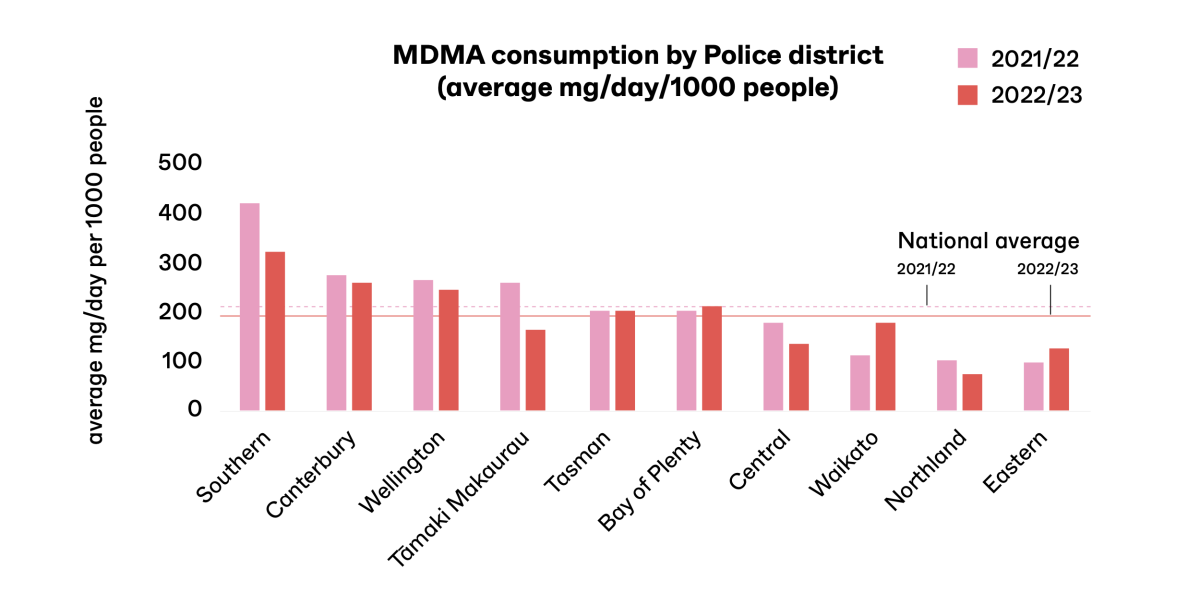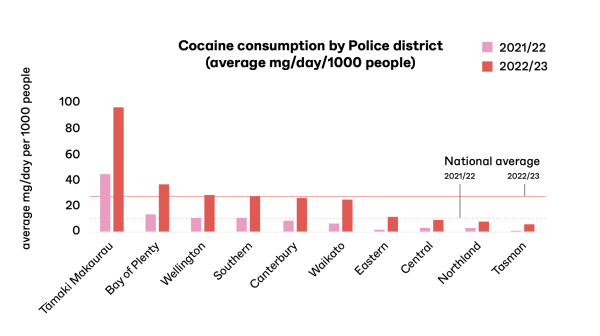The New Zealand Drug Foundation has released its latest report showing the trends in what illicit drugs New Zealanders use and where. We break down the five biggest takeaways from this year's report.
Every year, the New Zealand Drug Foundation releases their ‘Drug use in Aotearoa’ report.
They do this by compiling data from:
- Wastewater testing for the presence of drugs, done by the Institute of Environmental Science and Research and the National Drug Intelligence Bureau.
- The Ministry of Health’s New Zealand Health Survey.
- The NZ Drug Trends survey conducted by Massey SHORE & Whariki.
- The Needle Exchange Programme.
Here are the five biggest takeaways from the 2022/23 report.
More older people are smoking weed
Over the past decade cannabis use among 65 to 74 year olds has gone up over ten times, and has more than doubled for people aged 55-64.
Almost one in ten people aged 55-64 reported they had used cannabis in the last year, and one in twenty 65-74 year olds - which may not sound like a lot, but that’s up from fewer than one in 100 people in 2013.

New Zealand Drug Foundation executive director Sarah Helm said the uptick began around the time medicinal cannabis was legalised.
“[This increase begins] at the same time when we started to discuss the therapeutic use of cannabis,” Helm said.
“If I was an elderly arthritis patient hearing that, I would certainly be keen to give it a try.”
Helm also noted that the current generation of 65-74 year-olds would have been in their youth in the 1960s and 70s when cannabis use was much more common.
On the flipside, there was a dip in the number of young people reporting they had used cannabis in the last year.
While 15-24 year olds are still the highest cannabis users, there was a 5% drop in the number of people that age who reported they used cannabis in the last year.
Helm, who previously worked for the Alcohol Advisory Council, said we had seen similar trends with young people moving away from drinking alcohol.
However, we would need to see how cannabis usage statistics changed in the coming years to know if it really represents a change in young people’s attitudes towards the drug, she said.
Disabled people are more likely to use drugs
A theme across all substances in the report is that disabled people are far more likely to take them.
Compared to non-disabled people, disabled people are
- nearly four times as likely to use cannabis weekly
- five times more likely to have used non-prescribed amphetamines*
- over three times more likely to have used opioids.
*Types of amphetamines may be prescribed for some disabilities, but this data is from a question specifically asking about non-prescribed drug use.
Helm said it has been known for a long time that illicit drug use is higher for people with disabilities, but not enough work has been done to understand why, what the benefits and harms are, and how we change services to address the needs this drug use is fulfilling.
“Cannabis, amphetamines, and opioids all have therapeutic uses,” Helm said.
“It would make sense they were being used for therapeutic reasons. I want to understand the experience of disabled people [with these drugs] so we can have the right services available.”
Meth use is lower than other drugs, but the impact is much greater
Nationally, 1.1% of people reported using amphetamines like methamphetamine in the last year.
This is compared to 14.2% who used cannabis, 3.6% who used MDMA, 2.5% who used psychedelics and 1.3% who used cocaine.
“Sometimes the big feelings on meth can cloud the accuracy of the situation,” Helm said.
“Meth usage has been at 1.1% for a long time, and we know from previous health surveys that only about a quarter of those people use it regularly.”
While the usage may be lower than some think, Helm said the harm is higher than many other drugs, and its use is concentrated in some communities.
“We have this American ‘one hit and you’re hooked mentality' which creates a lot of stigma,” Helm said.
“That makes it very difficult for someone who has used meth to tell anyone and get support.”
Cocaine use spiked considerably last year
Last year 1.3% of people reported using cocaine, compared to 0.6% in 2017.
Wastewater testing shows a 93% increase in the daily use of cocaine, with the largest usage being concentrated in Auckland.

Cocaine is still relatively rare in New Zealand, Helm said, but surveys and wastewater testing show it is likely growing.
“In fact, more people reported using cocaine in the last year than meth,” Helm said. “Although, the volume consumed is significantly less than meth.”
Helm said global cocaine suppliers have become much more efficient at producing it and so are moving into markets like New Zealand that have not historically been targeted.
Dunedin is still the MDMA capital of NZ, but it’s harder to find
While only 3.6% of people reported using MDMA in the last year, that figure was much higher among young people.
8.1% of people aged 15-24 said they had used MDMA in the last year.
Its usage is also much more concentrated in some regions like Wellington, Canterbury, and particularly Dunedin.


However, there was a dip in consumption in the last year as 23% reported it was hard to buy, compared to only 10% who said the same thing in 2020.
MDMA is often associated with partying, Helm said, which is why it is so popular with young people and much less so with older people (only 0.2% of people aged 55+ reported using MDMA in the last year).
The greatest risks with MDMA come from the fact that what people take may not actually be MDMA, which is why drug checking services are important, Helm said.
Where to get help:
- The Ministry of Health has a list of different addiction help services here
- Free 24-hour drug and alcohol helpline: 0800 787 0797
More stories:
Why NZ loves doing spots so much
“It appeals to the New Zealand DIY spirit."
Nangs to the door: the curious rise of NZ’s ‘whipped cream’ industry
Why the hell am I so aggressively being advertised whipped cream paraphernalia?
1 in 3 drugs in NZ are not what you think they are
Why you should never assume you know what drug you’re taking.